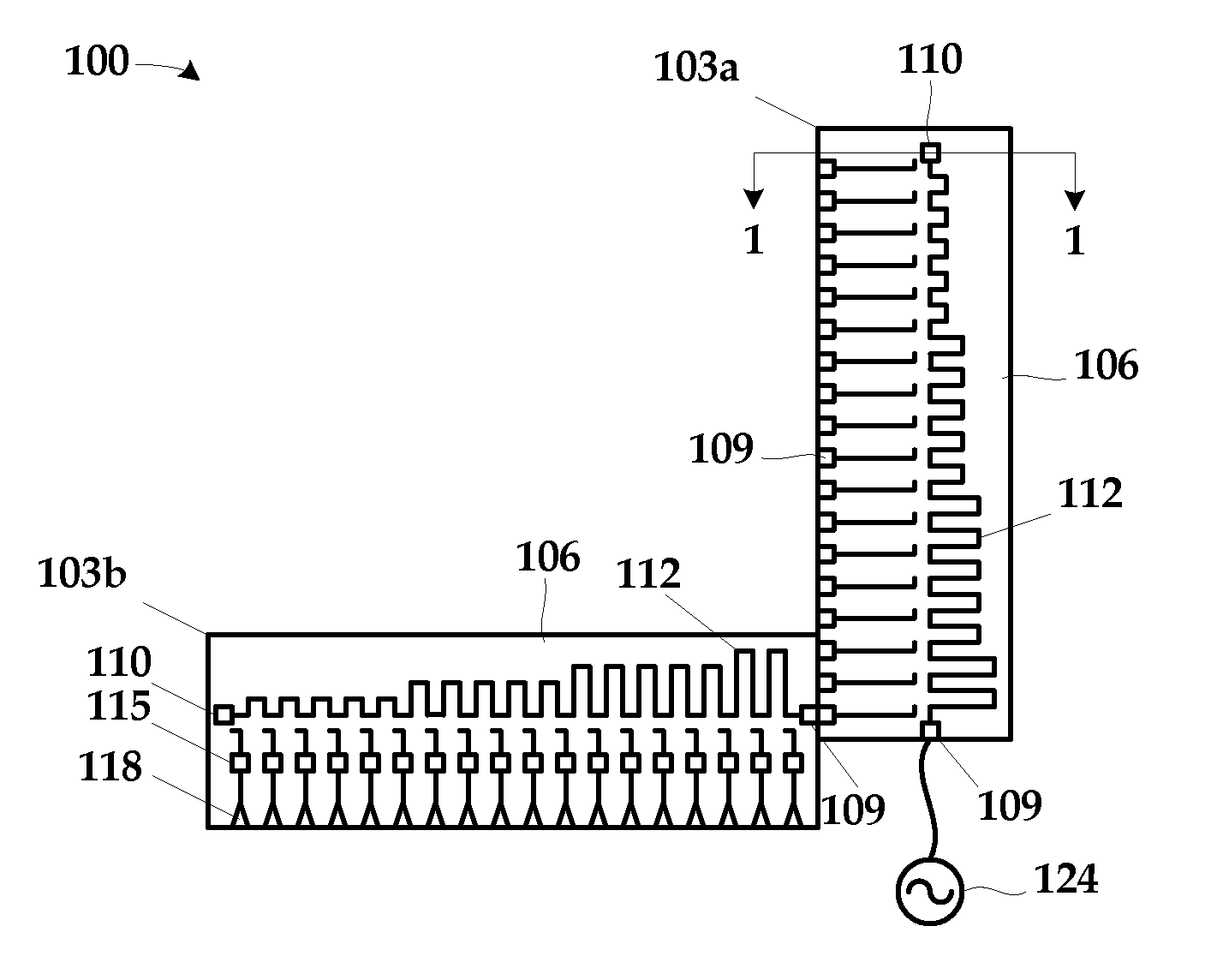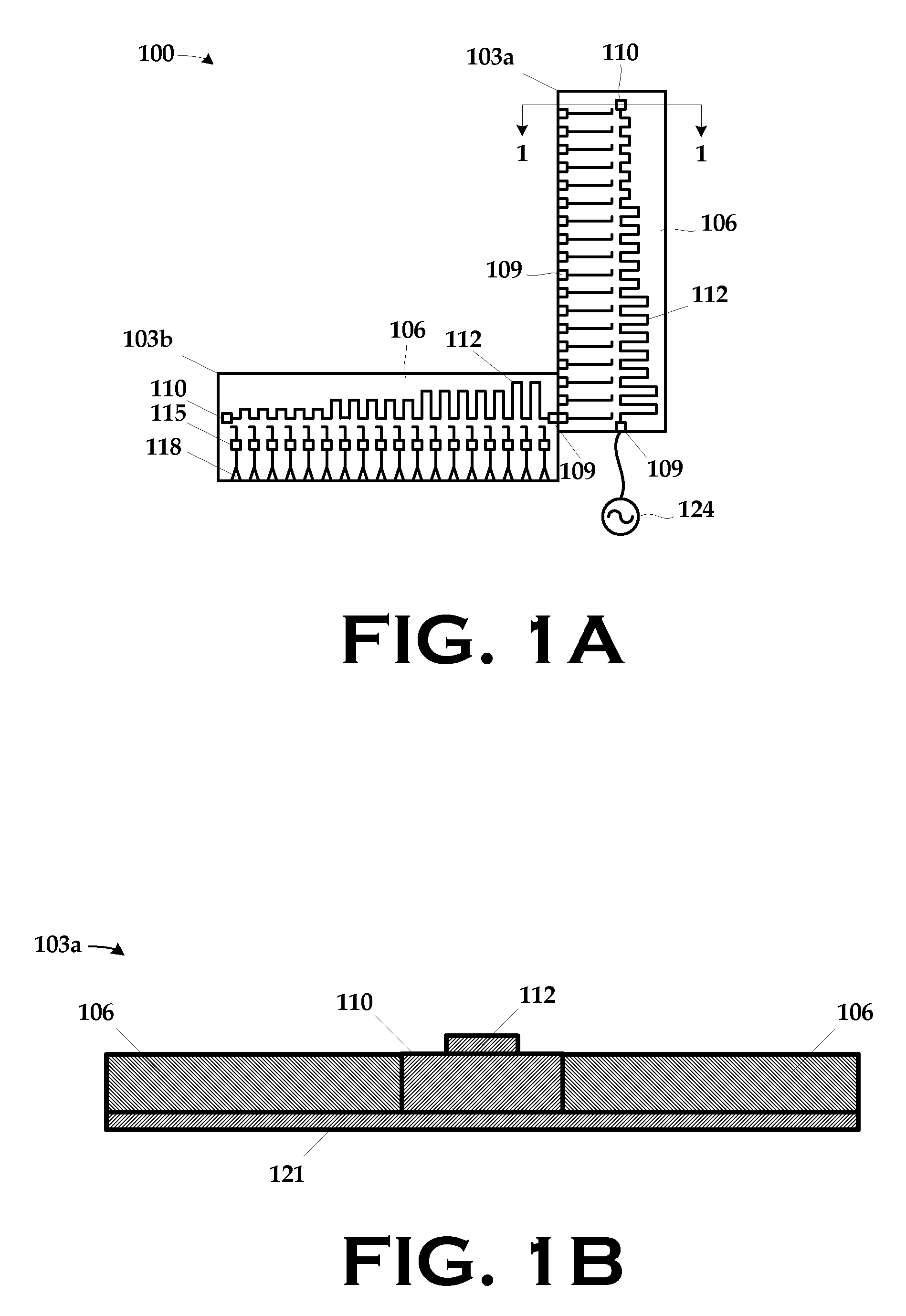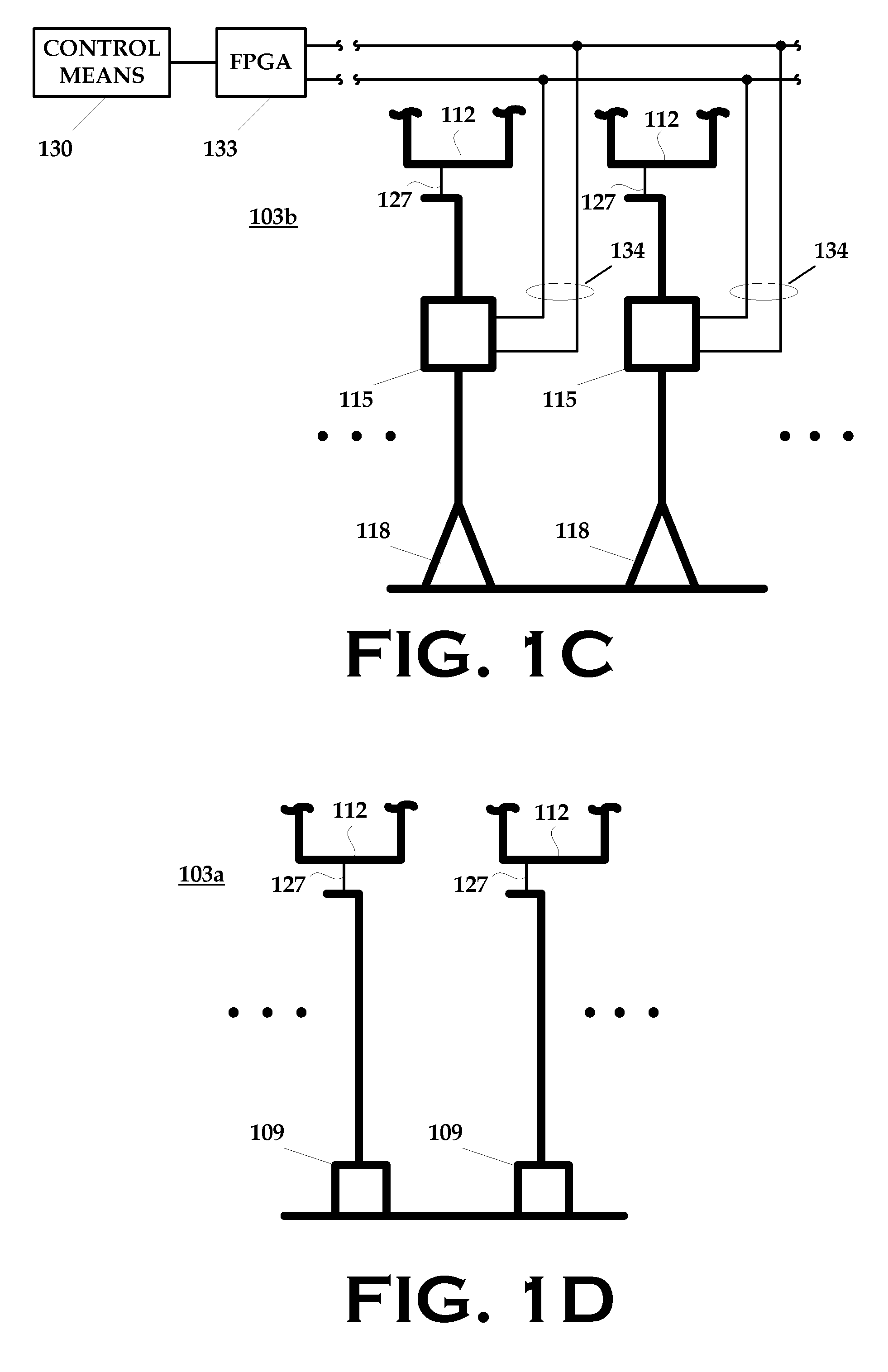Millimeter wave electronically scanned antenna
a technology of electronically scanned antennas and which is applied in the direction of antennas, non-resonant long antennas, modular arrays, etc., can solve the problems of high cost, limited scanning performance, and mechanically scanned antennas traditionally used on millimeter wave seeker systems
- Summary
- Abstract
- Description
- Claims
- Application Information
AI Technical Summary
Benefits of technology
Problems solved by technology
Method used
Image
Examples
Embodiment Construction
[0026] Illustrative embodiments of the invention are described below. In the interest of clarity, not all features of an actual implementation are described in this specification. It will of course be appreciated that in the development of any such actual embodiment, numerous implementation-specific decisions must be made to achieve the developers' specific goals, such as compliance with system-related and business-related constraints, which will vary from one implementation to another. Moreover, it will be appreciated that such a development effort, even if complex and time-consuming, would be a routine undertaking for those of ordinary skill in the art having the benefit of this disclosure.
[0027]FIG. 1A illustrates a subassembly 100 comprising two antenna components 103a, 103b in an unassembled view and FIG. 1B is a plan, sectional view of the antenna component 103a along line 1-1 in FIG. 1A. Each of the antenna components 103a, 103b includes a substrate 106. A coupler 109 is for...
PUM
 Login to View More
Login to View More Abstract
Description
Claims
Application Information
 Login to View More
Login to View More - R&D
- Intellectual Property
- Life Sciences
- Materials
- Tech Scout
- Unparalleled Data Quality
- Higher Quality Content
- 60% Fewer Hallucinations
Browse by: Latest US Patents, China's latest patents, Technical Efficacy Thesaurus, Application Domain, Technology Topic, Popular Technical Reports.
© 2025 PatSnap. All rights reserved.Legal|Privacy policy|Modern Slavery Act Transparency Statement|Sitemap|About US| Contact US: help@patsnap.com



